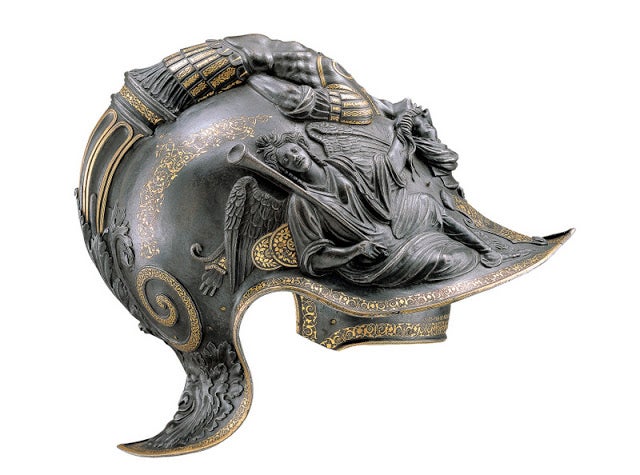- Joined
- Oct 22, 2010
- Messages
- 62,851
It's pretty funny that the only thread in the CE where Daily Mail links are tolerated is in the history thread, where they should have the least influence of all.
To be fair, it's still 1950 in MailWorld.
It's pretty funny that the only thread in the CE where Daily Mail links are tolerated is in the history thread, where they should have the least influence of all.
To be fair, it's still 1950 in MailWorld.
So I've been learning the basics of WWI and one thing I don't really understand is why Germany didn't just not go through Belgium to invade France to avoid a war with Great Britain.
Yes, feck, it was. I'll go and have a lie down.He was talking about WWI, the Maginot line was built after the war. Really, it was more or less built because of the war.
So I've been learning the basics of WWI and one thing I don't really understand is why Germany didn't just not go through Belgium to invade France to avoid a war with Great Britain.
http://www.dailymail.co.uk/sciencet...discovered-ancient-tomb-sealed-400-years.htmlMystery as century-old Swiss watch discovered in ancient tomb sealed for 400 years
Archaeologists are stumped after finding a 100-year-old Swiss watch in an ancient tomb that was sealed more than 400 years ago.
They believed they were the first to visit the Ming dynasty grave in Shangsi, southern China, since its occupant's funeral.
But inside they uncovered a miniature watch in the shape of a ring marked 'Swiss' that is thought to be just a century old.

The mysterious timepiece was encrusted in mud and rock and had stopped at 10:06 am.
Watches were not around at the time of the Ming Dynasty and Switzerland did not even exist as a country, an expert pointed out.
The archaeologists were filming a documentary with two journalists when they made the puzzling discovery.
'When we tried to remove the soil wrapped around the coffin, suddenly a piece of rock dropped off and hit the ground with metallic sound,' said Jiang Yanyu, former curator of the Guangxi Museum.
'We picked up the object, and found it was a ring.
'After removing the covering soil and examining it further, we were shocked to see it was a watch,' he added.
The Ming Dynasty - or the Empire of the Great Ming - was the was ruling dynasty in China from 1368 to 1644.
KE7 is having a lie-down at the moment. He'll be here shortly.


This Iron Age tunic made of wool has just been uncovered in Norway, due to snow melting in the mountains. Fascinating to see an every-day item and imagine the person or people who wore it. Mind you, not so good about the melting snow ...
http://www.bbc.co.uk/news/science-environment-23849332

This Iron Age tunic made of wool has just been uncovered in Norway, due to snow melting in the mountains. Fascinating to see an every-day item and imagine the person or people who wore it. Mind you, not so good about the melting snow ...
http://www.bbc.co.uk/news/science-environment-23849332

The Cheapside Hoard is an unprecedented collection of jewelry from the late 16th and early 17th century discovered in 1912 by workers demolishing the Wakefield House in Cheapside, London, near St. Paul’s Cathedral. They drove a pickaxe into the cellar floor and hit a decayed wooden box that had been hidden there centuries earlier before the Great London Fire of 1666. Inside the box were trays of jewelry, nearly 500 pieces made of gold, enamel and gemstones from all over the world.
The fossils found during the surveys include a featherless chicken that looked like an iguana


It had actually been patched, so they obviously kept stuff for a long time. I expect the smallest kid had to wear it in that state.They didn't take great care of their clothing. Noggies never heard of a needle and thread?

Ms Kreuzman weighed only 68 pounds when an American soldier picked her up and carried her to safety, she recalled – by that point her mother, father and brother had already died or been killed. She ended up in Mauthausen after her family was taken from a Jewish ghetto in Krakow, Poland.

I found this amazing - it's probably the oldest handbag in the world. It was made in the 14th century in Northern Iraq. If you saw it in a shop window, you could easily think it was something fairly modern (except it's made of metal!).
http://www.bbc.co.uk/news/blogs-magazine-monitor-26288958



The 2,025 km-long Kolyma Highway in the far east of Russia is known as the Road of Bones because the thousands of gulag prisoners who died building it lie just beneath its surface.
Captured escapees from camps were typically given 10 additional years for "economic counter-revolution", which during Stalin's era was also the fate of some innocent civilians convicted for being late to work, stealing a bottle of milk or neglecting a collective-farm cow...

A very good Historical Pictures thread, courtesy of The Liverpool Way forum:
http://www.liverpoolway.co.uk/index.php?/topic/105492-historical-pictures/
